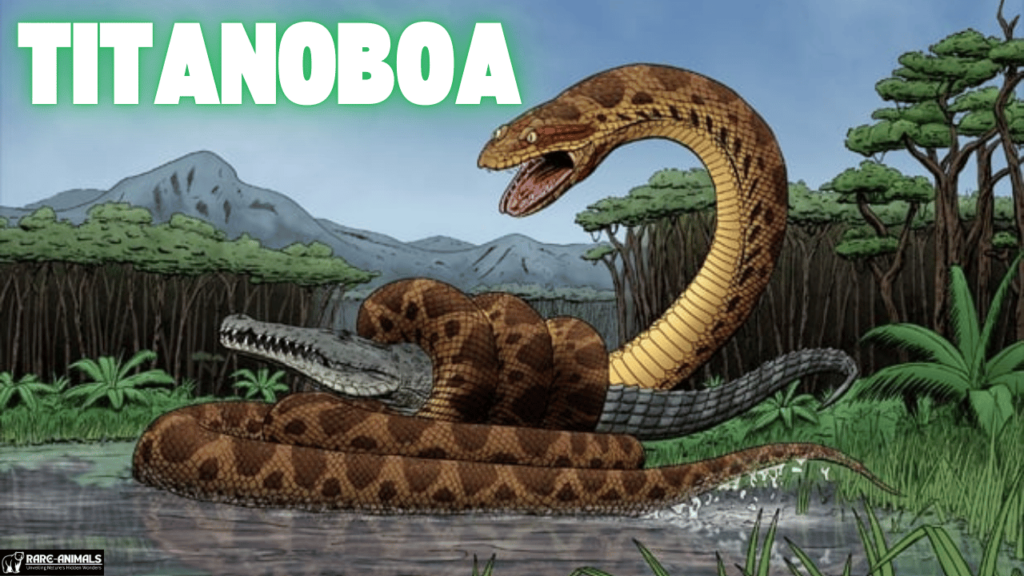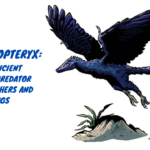Imagine a snake so massive that it could swallow a crocodile whole. Titanoboa, the largest snake ever discovered, roamed the Earth around 60 million years ago, dominating the prehistoric rainforests of Colombia.
This colossal serpent has fascinated scientists and nature enthusiasts alike, providing crucial insights into prehistoric ecosystems, climate conditions, and the evolution of reptiles.
What is Titanoboa?
Titanoboa cerrejonensis was a species of giant snake that thrived in the Paleocene epoch, shortly after the extinction of the dinosaurs. Here are some astounding facts about this prehistoric predator:
- Size and Weight: Estimated to have grown up to 42-50 feet (12.8-15 meters) long and weighing over 2,500 pounds (1,135 kg), Titanoboa dwarfed modern-day anacondas and pythons.
- Habitat: Fossils were discovered in the Cerrejón coal mines of Colombia, suggesting it lived in a hot, humid environment with dense swamps and rivers.
- Diet: Likely an apex predator, Titanoboa preyed on large fish, crocodile-like reptiles, and possibly other snakes.
- Comparison to Modern Snakes: Unlike venomous serpents today, Titanoboa was a constrictor, using its immense strength to squeeze the life out of its prey.
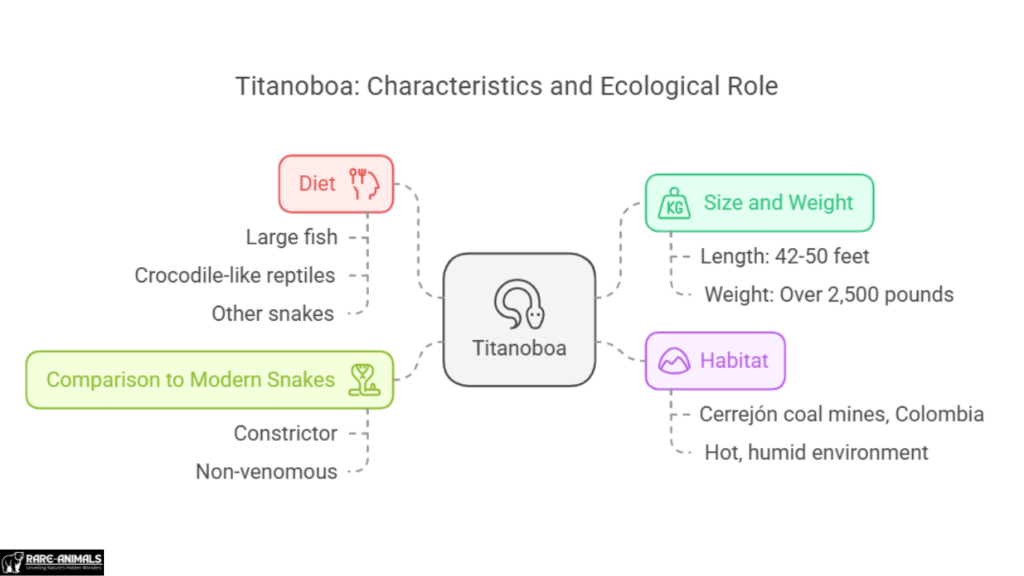
The Discovery of Titanoboa
In 2009, an international team of paleontologists uncovered Titanoboa fossils in Colombia’s Cerrejón coal mine. This discovery reshaped our understanding of prehistoric life:
- Excavation Site: The fossils were found in coal deposits dating back 58-60 million years, a time when Earth was significantly warmer.
- Implications for Climate Science: Scientists estimate that Titanoboa thrived in temperatures around 90°F (32°C), reinforcing the link between reptilian gigantism and warm climates.
- Fossil Evidence: Alongside Titanoboa, fossils of giant turtles, crocodilian relatives, and tropical plants were unearthed, helping reconstruct the Paleocene ecosystem.
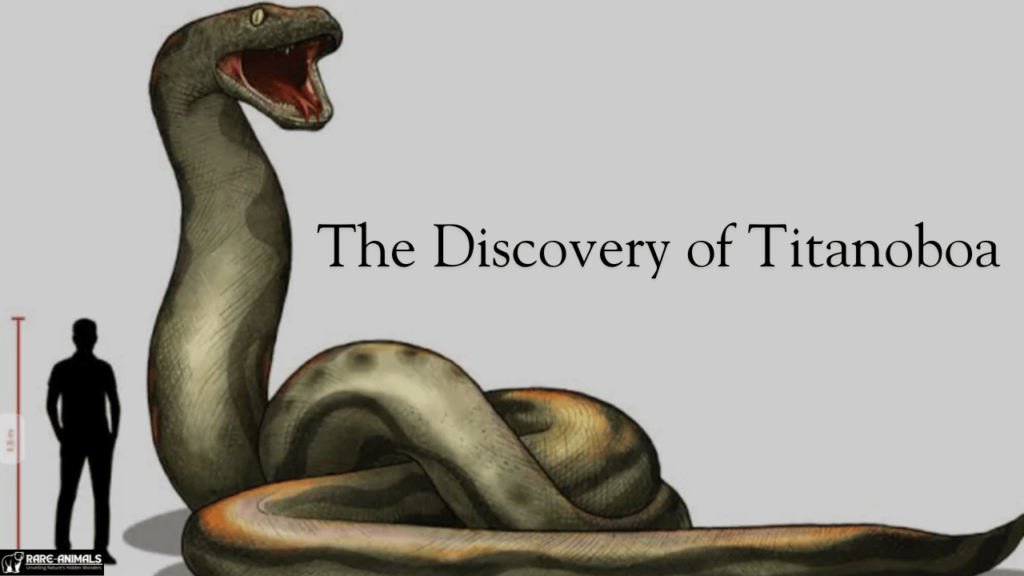
Titanoboa’s Role in the Ecosystem
Understanding Titanoboa’s place in its ancient environment helps us grasp its significance in prehistoric biodiversity:
- Apex Predator: Without competition from dinosaurs, Titanoboa dominated its ecosystem, preying on large vertebrates.
- Climate Indicator: Its size and existence suggest that equatorial regions were once much hotter, aiding scientists in climate modeling.
- Evolutionary Bridge: Titanoboa provides insight into the transition of snake species after the dinosaur extinction.
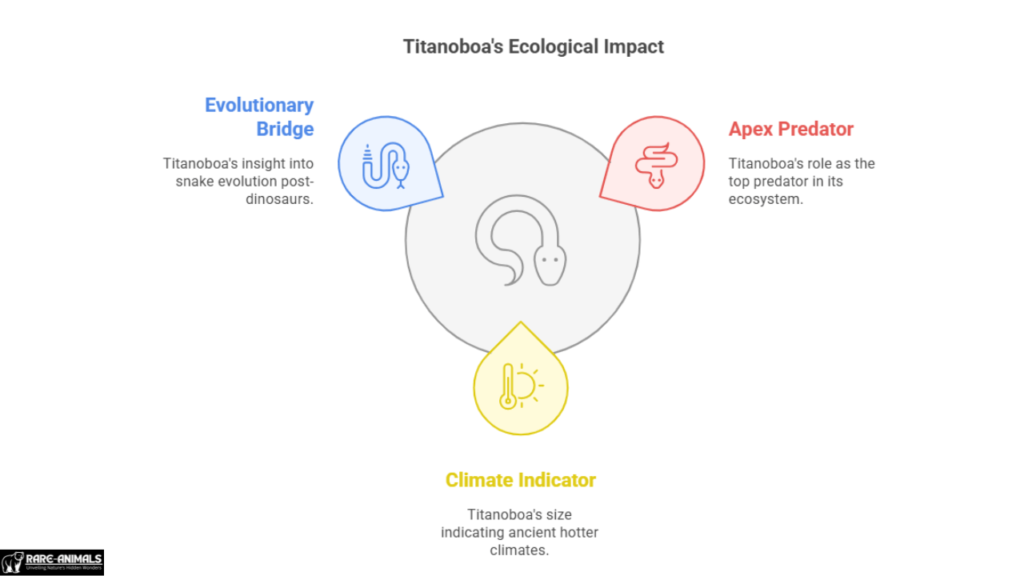
Could Titanoboa Still Exist Today?
While some legends and myths claim giant serpents roam remote jungles, there is no scientific evidence that Titanoboa or its direct descendants survive today. However, its legacy continues in the form of modern constrictors like anacondas and reticulated pythons.
Conclusion
Titanoboa remains one of the most astonishing prehistoric discoveries, reshaping our understanding of giant reptiles, ancient climates, and evolutionary biology.
Its discovery underscores the importance of continued paleontological research in uncovering Earth’s hidden history. If you’re fascinated by prehistoric creatures, share this article and explore more about our planet’s incredible past!
FAQs
1. How did Titanoboa go extinct?
Titanoboa likely vanished due to climate cooling and competition from emerging mammalian predators.
2. How does Titanoboa compare to modern snakes?
It was nearly twice the length and several times heavier than the largest living snake, the green anaconda.
3. Could Titanoboa have eaten dinosaurs?
Since it lived after dinosaurs went extinct, it mainly preyed on large fish and reptiles.
4. Where can I see Titanoboa fossils?
Fossils and a life-sized model are displayed at the Smithsonian National Museum of Natural History.
5. What was Titanoboa’s bite force?
As a constrictor, Titanoboa did not rely on bite force but rather on immense crushing power to suffocate its prey.

Alveena is an experienced content writer with a knack for crafting engaging and insightful pieces. She thrives on breaking down complex ideas and presenting them as clear, captivating content that resonates with readers.

